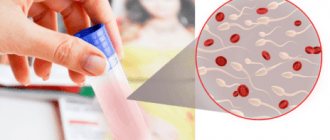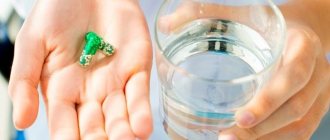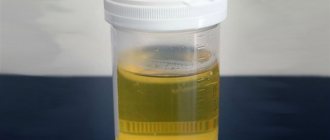The appearance of cracks in the foreskin in men is most often associated with exposure to traumatic factors and balanoposthitis. If left untreated, the skin becomes scarred and phimosis develops, requiring surgery. Therapy for cracks involves the use of local antiseptic, antibacterial, anti-inflammatory and regenerating agents. If necessary, systemic antibiotics and antimycotics are prescribed. In combination with medications, you can use traditional medicine recipes.
Associated signs of the disease
In addition to violations of the integrity of the skin of the penis, the following clinical signs occur:
- increasing itching;
- discomfort;
- the sensitivity of the head is lost;
- accelerated ejaculation;
- pain;
- problems with urination;
- wounds, suppuration, scars.
The listed signs negatively affect a man’s sex life and affect self-esteem and mood. To avoid complications, you need to see a urologist or andrologist in time.
Treatment
It is possible to cure cracks by eliminating the cause of their occurrence, which is achieved through correct diagnosis.
Drugs
It is possible to treat cracks with drugs if they are caused by:
| Causes of cracks | Funds group | Name of drugs |
| Mechanical injuries | Lubricants are used during intimacy, and moisturizing creams are used for partners. If it occurs, use anti-inflammatory, antiseptic ointments to soften the skin and eliminate injuries. | Panthenol spray, ointments with panthenol |
| Pathogenic microorganisms | Diseases caused by fungi or bacterial infections can be cured with antibacterial drugs and antimicrobial agents. | Nizoral, Lamisil |
| Allergies | The cause of the allergic reaction is eliminated, and antihistamines (tablets and ointments) are prescribed that prevent the occurrence of allergies. | Epidel, Bepanten, Erius, Zyrtec |
| Balanitis | The initial stages of the disease are treated with antibacterial drugs. For fungal etiology of the disease, antifungal ointments are prescribed. If the cracks have developed into erosion and ulceration, then antibiotic ointments are prescribed in combination with baths and compresses. | Nystatin, Levomycetin ointment, Tetracycline |
| Postitom | Antifungal, anti-inflammatory and antiseptic ointments are prescribed together with mandatory genital hygiene using special solutions. | Furacilin, potassium permanganate, hydrogen peroxide |
| Herpes | Antiviral drugs are prescribed that interfere with the action of the herpes virus, but the virus cannot be completely cured. | Acyclovir, Famciclovir, Valaciclovir |
Important! The prescription of ointments and medications should be made by the attending physician.
Independent choice of remedies can provoke irritation and aggravate the situation.
Surgery
If there are cracks in the penis, it is advisable to perform surgery if a diagnosis of phimosis or diabetes mellitus is present. Then the foreskin is circumcised. This method eliminates the cause and consequences of the disease: narrowing of the foreskin and scars with cracks.
Treatment at home
Folk remedies for the presence of cracks in the penis can be used if drug therapy is carried out, and the doctor recommended the use of herbal infusions and compresses.
You cannot treat any cracks on your own without a doctor’s recommendation.
For treatment, natural remedies are used that have antibacterial, antiseptic, anti-inflammatory properties: chamomile, calendula, string, nettle, burdock root.
They make decoctions, compresses, baths - procedures that promote healing and softening of chapped skin.
Local reasons
For most men, this group of diseases and disorders is of clinical importance.
Among the pathologies there are infectious and aseptic conditions, venereal and nonspecific diseases.
So, let's look at the factors that can trigger the appearance of cracks on the penis:
- In the first place are sexually transmitted diseases, in particular genital herpes. Some time after infection with this disease (this period is called the incubation period), small blisters appear on the penis. When they burst, they release a colorless liquid (lymph) and lead to the formation of small cracks.
- Also, cracks in the foreskin of the penis can appear due to excessive or, conversely, insufficient intimate hygiene in a man. If intimate hygiene procedures are not performed regularly for some reason, dirt may accumulate in the folds of the skin of the penis. This creates an optimal environment for the infection to multiply, in turn causing inflammation.
- Allergies can also lead to the above undesirable results. Eczema, atopic dermatitis, contact allergic dermatoses cause dryness and thickening of the skin, loss of elasticity and the formation of linear cracks.
- Cracks on the head of the penis can be caused by vitamin deficiency (in particular vitamins A and E),
- Cracks on the penis can occur due to too much sexual contact or the act of masturbation. If the sexual partner has insufficient lubrication (of course, if artificial lubrication is not used).
- Candidiasis balanoposthitis is the result of excessive activity of the fungal flora. It is accompanied by redness and swelling of the head and leaves of the foreskin, on which cracks, erosions and weeping appear.
That is, there are two main mechanisms - inflammation (infectious or allergic) and mechanical irritation.
It is very important to find out and detail the reasons, since the approach to treatment and the prospects for recovery depend on this.
Infection
Infectious diseases are very common.
The leadership is firmly held by sexually transmitted diseases.
Thus, cracks in the skin of the penis are often provoked by viruses, in particular genital herpes.
Some time after infection with this disease (this period is called the incubation period), small blisters appear on the penis.
When they burst, they release a colorless liquid (lymph) and lead to the formation of small cracks.
A certain percentage of cracks in the glans and foreskin are attributed to fungal infections of the male external genitalia.
The most common disease is candidal balanoposthitis - the result of excessive activity of the fungal flora.
It is accompanied by redness and swelling of the head and leaves of the foreskin, on which cracks, erosions and weeping appear.
Nonspecific flora, with normal immunity and compliance with hygiene rules, is rare.
However, sometimes cracks in the penis are observed with coccal streptoderma.
It all starts with small pustules on the skin of the shaft of the penis or the head.
The pustules open (or are squeezed out by the patients themselves), seed the surrounding skin, causing new lesions to appear.
At the peak of the process, they merge and form deep bleeding cracks.
After a visual examination, no doctor can say exactly what infection caused the lesion.
Genital infections very often cause the same cracks as nonspecific microorganisms.
Hygiene
Lack of cleanliness and excess of it can harm the skin of the penis equally.
If a man does not regularly clean his genitals, smegma accumulates under the foreskin.
Under the influence of heat, humidity and microorganisms, this peculiar sweat decomposes, releasing irritating substances.
These chemical compounds damage the epithelium, causing weeping and cracks in the area of the coronary sulcus and the inner layers of the foreskin.
And vice versa, with excessive washing of the penis several times a day, the natural immune defense is washed away from the surface of the shaft and head.
The skin dries out, cracks, and good conditions for the development of infection appear.
Mechanical irritation
Typically, penis cracks have the nature of functional chafing - they occur during sexual intercourse or excessive, intense masturbation.
Three factors are key:
- Hydration. When a partner has a dry vagina, the penis simply rubs, the skin turns red, and becomes covered with small abrasions and cracks. Most of all - in the area of the coronary sulcus and frenulum
- Duration. During prolonged sexual intercourse, the skin of the penis and glans is overloaded and stretched. Capillaries burst in it and cracks form.
- Intensity. The practice of BDSM now surprises no one, but caution is sometimes forgotten in the heat of passion. A similar mechanism is also typical for teenage masturbation, when attempts at self-satisfaction are made several times a day.
Allergic reactions
If we are talking about local phenomena limited only to the skin of the penis, then their causes most often lie in the following nuances:
- The fabric from which the underwear is made (allergies especially often occur to artificial materials).
- Fabric paint.
- Poor quality rinsing after washing, when traces of washing powder remain.
- The latex from which condoms are made.
- A lubricant used to improve comfort during sex.
Cracks in the penis with “local” allergies occur against the background of contact dermatitis - limited redness and peeling in areas of skin contact with allergens, local itching and burning.
Complications of cracks in the penis due to balanoposthitis
Among the complications of balanoposthitis, with primary balanoposthitis, phimosis is primarily noted.
Frequent relapses include infectious and inflammatory processes in the urinary tract and sexual dysfunction.
Phimosis and balanoposthitis threaten penile cancer.
Stones called smegmolites can form in the preputial sac.
In childhood, balanoposthitis threatens with pyelonephritis and hydronephrosis.
The gangrenous type of balanoposthitis is fraught with self-amputation of the penis.
A weakened immune system leads to fungal septicemia and bacteriotoxic shock.
Consequences
If you neglect the treatment of cracks in the penis, complications and exacerbation of inflammatory processes are guaranteed.
Additionally, the following problems may occur:
decreased sensitivity of nerve endings in the tissues of the genital organ;- the appearance of ulcerative formations at the site of cracks;
- pain when urinating;
- inability to have sexual intercourse due to painful sensations;
- the occurrence of urethritis, cystitis, inflammation of the lymph nodes when bacteria penetrate into neighboring organs;
- advanced forms of diseases threaten oncology or gangrenous condition.
Important! Any cracks, even minor ones, can develop into serious health problems, so if they appear, you should consult a doctor.
In the initial stages, it is much easier to get rid of cracks in the genital organ and the disease that causes them.
Treatment methods
Once the exact reason why the skin on the foreskin is cracking is established, the question immediately arises: how to apply and treat this pathology. There are a number of ways to eliminate this disease, both in modern and alternative medicine. Let's look at each type of therapy in more detail.
Drug treatment
If a man has cracks in his foreskin, how to treat them should only be determined by a urologist. In cases where it is not possible to visit a doctor in the near future, you must adhere to the following rules to alleviate the condition:
- Free the head from the skin as much as possible and rinse it thoroughly with purified water or a decoction of medicinal herbs;
- apply any antibacterial ointment.
After treating the head of the penis with ointment, you need to cover it with flesh and massage it well. This procedure should be carried out 3 times a day before visiting a specialist.
In any case, it is necessary to treat the genital organ if a crack appears on the skin of the penis, since ignoring this pathology can lead to a weakening of its elasticity, as well as hardening. This is especially true in cases where symptoms intensify and antibacterial therapy does not give the desired result.
In advanced forms of this disease, the attending physician prescribes the use of medications from the following groups:
- antibiotics;
- antiallergic drugs;
- immunomodulators;
- antifungal drugs.
You can also improve your overall well-being during the period of using potent medications by taking complex vitamins.
If the cause of cracks in the foreskin in men is phimosis or paraphimosis, then experts strongly recommend surgical intervention, that is, circumcision. Its essence is to excise the skin on the head using a scalpel. This will help prevent the recurrence of cracks in the foreskin in men.
Another way to alleviate the condition is baths using antiseptic solutions. They help eliminate inflammatory processes, that is, they have a calming effect. Such procedures should be carried out 2 times a day.
Traditional methods
If cracks appear on the outermost skin of men, treatment with folk remedies involves the use of baths based on medicinal decoctions. You can prepare them in the following ways:
- Pharmaceutical camomile. You need to take 1 tbsp. l. dried flowers of this plant, pour 1 glass of just boiled water. Leave for 1 hour, then strain.
- Celandine. 1 tbsp. l. dried celandine herb should be poured with 1 glass of water. Leave for 1 hour.
- Oak bark. You should take 2 tbsp. l. oak bark, add 0.5 liters of water. Put on fire, bring to a boil. Simmer over low heat for 15 minutes. Leave for about 4 hours.
- Calendula. 1 tsp. pour calendula with 1 cup of boiling water. Cover the container with a lid and leave for about 1 hour.
In addition to the above medicinal plants, you can also use thyme, St. John's wort, nettle, yarrow, etc. They can replace baths based on medicinal solutions. Before carrying out the procedure, the broth must be filtered.
Prevention
In order to prevent cracks in the penis, it is necessary to pay attention to lifestyle and habits that lead to diseases of the genital area.
It is important to follow simple rules:
- refrain from casual sex without a condom;
- maintain personal hygiene (especially genitals);
- do not injure the genital area;
- maintain an active lifestyle;
- monitor your diet;
- use loose underwear made of soft natural fabrics;
- maintain healthy immunity.
In a healthy body, the entry of pathogenic microorganisms has a major obstacle in the form of a strong immune system.
In addition, the occurrence of cracks in the genitals is reduced to a minimum if a man takes care of his body, keeps it clean, monitors his sex life, and does not allow casual relationships.
What tests should be taken if cracks on the penis appear frequently?
Depending on the diagnosis, the examination algorithm is variable.
• microscopy of discharge; • PCR diagnostics to exclude STIs; • blood for sugar; • tests for HIV, syphilis and hepatitis B and C; • general urine test to exclude urethritis.
Expert advice may be helpful:
• endocrinologist; • urologist; • dermatovenerologist; • infectious disease specialist; • oncologist.
If a tumor process is suspected, a cytological examination is performed.
Clinical manifestations
The formation of cracks occurs in the inner layer of the skin, which entails various manifestations:
- the result of a pathological process, accompanied by the formation of cracks of different sizes and causing acute pain for the patient;
- secondary infection can occur in the form of an inflammatory process near an existing crack;
- as a result of injury, swelling may form, leading to a decrease in skin elasticity and the formation of small cracks;
Patients often experience acute sensations of pain when trying to expose the head of the penis, urination and intimate relations. If such manifestations occur, first of all you should try to avoid the factors that provoke pain.
Useful information on problems related to the foreskin and urology:
- Calling a urologist to your home
- Balanitis
- Balanoposthitis
- Frenum plastic surgery
- Urethral swab
- Prostate massage
- Circumcision
- Tests for STIs
- Treatment of sexually transmitted diseases
- Ultrasound at home
- Frenum of the penis
- Pyelonephritis
- Ultrasound of the bladder
- Diagnosis of sexually transmitted infections
- How to prepare for an appointment with a urologist?
- How to get tested for urological diseases?
- What tests can be done by a urologist?
- What diseases does a urologist treat?
- What symptoms should you consult a urologist for?
- How to make an appointment with a urologist at the clinic?
- Consultation with a urologist
- Diagnosis of urological diseases
- Examination by a urologist
- Treatment of urological diseases
- Appointment with a urologist
- Urology - the science of men's health
- Pediatric urologist
- Male doctor
- Paid urologist
What tests are taken to diagnose the causes of cracks in the penis?
To establish the correct diagnosis and causes of cracks in the penis, the following is carried out:
- microscopic examination of a smear (scraping) from the urethra,
- crops using bacteriological methods,
- biochemical blood test,
- PCR diagnostics.
Microscopy of a urogenital smear is performed to determine the causative factor causing urethritis.
Bacteriological cultures are done to accurately identify the causative agent of the disease.
Blood biochemistry is carried out to assess the capabilities of the immune system in fighting infections.
PCR diagnostics are done to diagnose balanoposthitis based on scrapings of foreskin tissue.
Based on the results of these tests, the infectious pathogen that causes the disease leading to the appearance of cracks in the penis is determined.
Histological examination of penile tissue should be carried out if the presence of penile tumors is suspected in order to confirm or refute their malignancy.
In the presence of anogenital warts on the penis, histological examination is always carried out.
To prevent diseases such as balanoposthitis, men need to contact urologists for examination and consultation at least once a year.
In order to prevent the development of balanoposthitis, it is necessary to pay due attention to the treatment of infectious and inflammatory diseases of the male MPS.
First of all, we are talking about prostatitis, urethritis and cystitis.
It is necessary to control chronic forms of genitourinary diseases and prevent casual sexual contacts.









